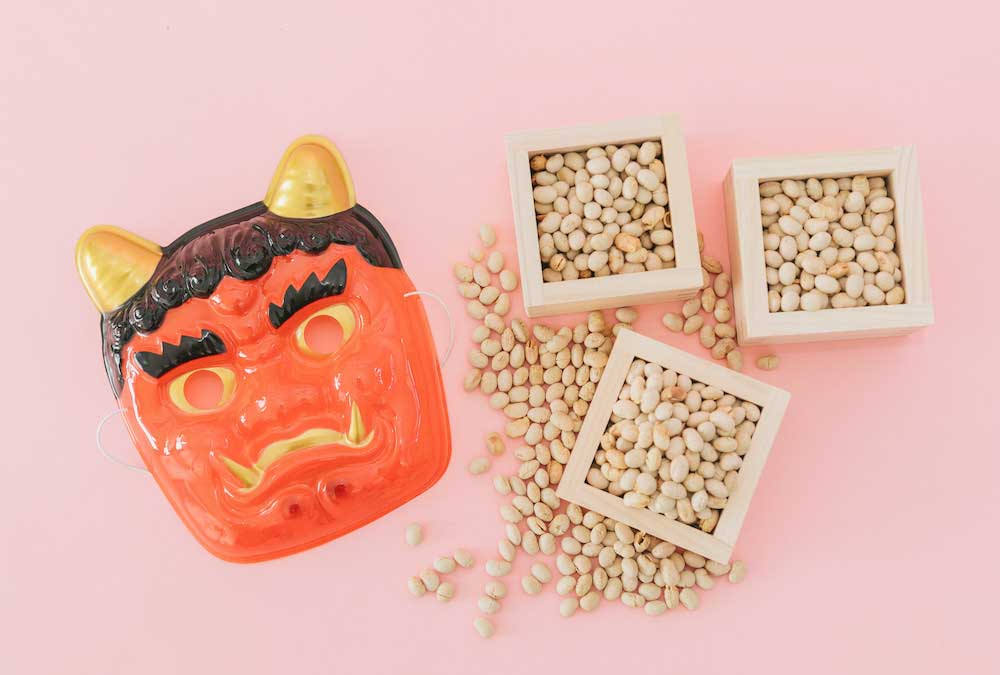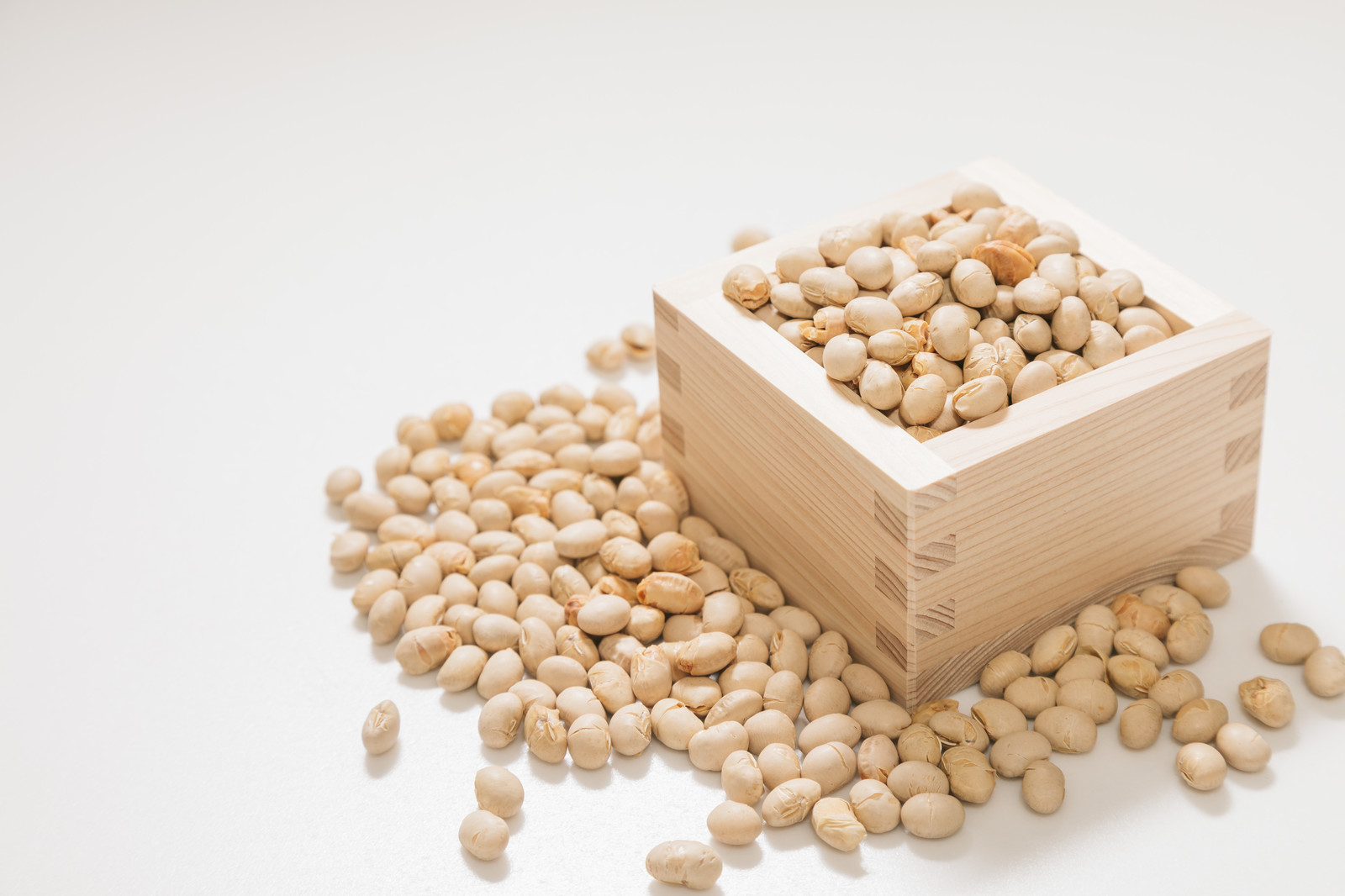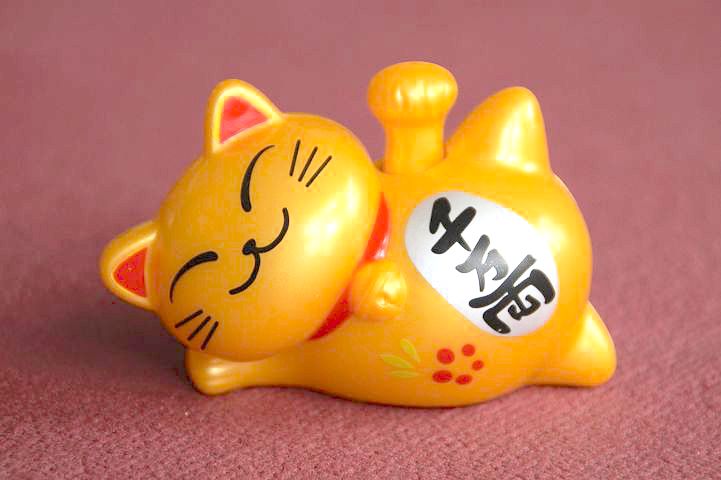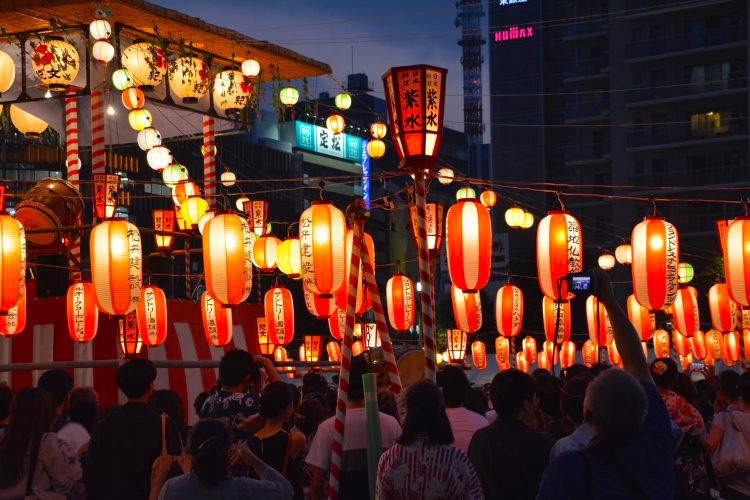
英語で説明する日本のお正月 編に続き、今回の記事では、日本の春の行事である「節分」と「豆まき」について、簡単な英語で伝える表現をご紹介していきます。
ご興味のある方は、当サイトで 英語クイズ(5000問) を出題しておりますので是非ご覧ください。
目次
節分と立春
一般的に、「節分」というと「立春の前日」、毎年2月3日頃の豆まきの行事のことをいいますが、本来「節分」とは、文字通り「季節を分ける」ことを意味し、「各季節の始まりの前日」を指します。
旧暦では、立春は「お正月」 として捉えられており、立春から一年が始まっていたのです。
節分:季節の変わる前日
- seasonal division
- the eve of the first day of each season
- the day before the first day of each season
- the day before the calendric beginning of each season
※ 江戸時代以降は「冬の終わり」を表すようになりました。
立春:春の初めの日
- the first day of spring
- the beginning of spring
- the arrival of spring
- the last day of winter
節分の簡単な説明
The word “setsubun” literally means “the parting of the seasons.”
(節分という言葉は、文字通り「季節を分ける」を意味します。)
Setsubun refers to the eve of the first day of each season.
(節分とは、季節の最初の日の前日を指します。)
Setsubun, or seasonal division, falls on the day before the beginning of spring, summer, fall, and winter.
(節分とは季節の分かれ目のことで、立春、立夏、立秋、立冬の前日にあたります。)
In old times, there were four setsubun a year.
(昔は、1年に4回節分がありました。)
In the past, the Japanese New Year started on Risshun.
(その昔、立春から1年が始まっていました。)
Formerly, the transition from winter to spring was considered the boundary between years.
(かつては冬から春になる時期を一年の境目としていました。)
Setsubun actually signifies “division of the seasons,” especially nowadays it falls on around February 3rd.
(節分は本来、「季節を分かれ目」を意味しますが、現在では特に、2月3日頃がこれにあたります。)
Setsubun gradually came to mean only the day before the first day of spring around February 3rd.
(次第に、節分は立春の前日である2月3日頃を意味するようになりました。)
Today, setsubun especially refers to the day before the first day of spring.
(現在では、節分は特に立春を指します。)
Today, setsubun indicates the eve of the first day of spring by the old calendar, which is the end of a year.
(今日では、節分は旧暦で年の変わり目にあたる立春の前日を指します。)
Setsubun is usually the day before the arrival of spring, and it is the last day of winter.
(節分とはふつう、春の最初の日の前日、そして冬の終わりの日をいいます。)
豆まきをする理由とは?

その昔、季節の変わり目に鬼(悪霊)がやってくると信じられていました。
そこで「邪気を払い、幸福を呼び込む」という意味を込めて、炒った豆を鬼にぶつけるという儀式が定着しました。
人々は「鬼は外!福は内!」と唱えながら、その年の幸運と無病息災を祈ります。
豆まきは、海外では以下のように表現されています。
- Bean-throwing festival
- Bean-throwing ceremony
- Bean-scattering ceremony
In the past, people believed that oni (demon) came when the seasons changed in Japan.
(昔、日本では季節の変わり目に鬼がやって来ると信じられていました。)
It was necessary to dispel negative things and evil spirits that brought about various plagues before the start of a new season.
(新しい季節を迎えるにあたり、不浄なものや厄災をもたらす邪悪なものを追い払う必要がありました。)
The roasted beans used for setsubun are called “fukumame,” which are said to be very effective against evil spirits.
(節分に使われる「福豆」という炒った豆には、悪霊を退治する力があるといわれています。)
In order to instill God’s power in the beans, they are to be offered/placed on the household altar until Setsubun.
(豆に神様の力が宿るように、節分までに神棚にお供えします。)
Scattering beans is a purification ritual for starting the new year.
(豆まきは、新しい年を迎えるための清めの儀式です。)
Throwing soybeans represents getting rid of bad luck and welcoming good fortune.
(豆を撒くことで、厄を払い幸運を招き入れることを表しています。)
On Setsubun days, people throw away beans with saying, “Oni wa soto, fuku wa uchi.”
(節分の日には、「鬼は外、福は内」と言いながら豆を投げます。)
Throwing beans is called “Mamemaki” in Japanese. Mame means “beans,” and maki means “scattering.”
(Throwing beans は日本語で「豆まき」といいます。Mame は「豆」で、maki は「撒くこと」を意味します。)
“Oni wa soto, fuku wa uchi” means “Demon be gone, happiness come in.”
(Oni wa soto, fuku wa uchi は、「鬼は外、福は内」という意味です。)
In Japanese, the word “oni” means evil spirit or demon, and “fuku” means luck and good fortune.
(日本語で「鬼」は邪気または悪霊、「福」は幸運を意味します。)
People scatter roasted beans both inside and outside their houses.
(家の中と外に、炒った豆を撒きます。)
It’s common at festivals for someone to dress up as “akaoni” (red devil or ogre).
(祭事などでは、誰かが赤鬼の格好をすることがよくあります。)
Some of the little kids get scared and cry when the Oni comes in.
(鬼が来ると、怖くて泣いてしまう子供たちもいます。)
After the beans are thrown, gather them all up and eat as many beans as your age.
(豆まきのあとは撒いた豆を拾い集めて、自分と同じ歳の数だけ豆を食べます。)
It is said that you will be healthy for the whole year by eating the same number of beans as your age plus one more bean.
(自分の年齢にもうひとつ加えた数の豆を食べると、1年を健康で過ごせるといわれています。)
In western Japan, there is also a custom to hang a “hiiragi-iwashi” (holly branches and a grilled sardine) on the door to prevent the demon from entering the house.
(西日本では、鬼が家に入ってこれないように「柊鰯」を入り口のドアに掛ける慣わしもあります。)
「鬼は外、福は内」の英語表現
- Demons out! Happiness in!
- Demons out! Luck comes in!
- Out with the demon! In with the happiness!
- Devils are outside! Luck is inside!
最後に
いかがでしたでしょうか。2月の行事といえば節分やバレンタインを思い浮かべる方も多いと思いますが、日本文化にご興味のある海外の方々とのスモールトークなどに、ご参考になれば幸いです。





